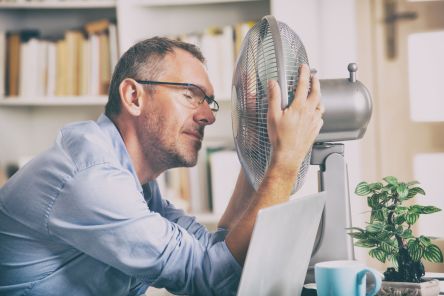Your tenant in the eastern wing is chronically cold. You’re fighting an uphill battle for safety as your tenant’s employees bring personal heaters into the space. In the western wing, however, your tenant’s employees can’t get cool enough. They complain of high energy bills while swearing the humidity will lead to mold problems. Uncomfortable tenants are more than a headache. They are a threat to your bottom line. Thermal comfort can impact your tenants’ desire to renew their leases. Additionally, a commercial property with low thermal comfort may indicate inefficiencies in its climate controls or building envelope. High turnover and an inefficient building will adversely affect your bottom line. Thermal Comfort + Your Bottom Line The American Society of Heating, Refrigerating and Air-Conditioning Engineers defines thermal comfort as the condition of mind that expresses satisfaction with the thermal environment. It is subjectively assessed by using the Comfort Scale or Thermal Index, both of which evaluate temperature, humidity, air velocity, and radiant temperature. As comfort is subjective, a commercial building’s thermal comfort ranking will vary from person to person. Health and Safety Executive recognizes an international standard which suggests that a building has “reasonable comfort” when at least 80 percent of its occupants are thermally comfortable. Improving Thermal Comfort in Commercial Properties There are three ways to notably improve tenant comfort and protect your investment: 1. Identify and Fix Leaks Address leaks in the building envelope. Contact a contractor to identify areas where your heating and cooling efforts are defeated by oversights in construction or maintenance. Resealing windows and adding weather stripping to doors, for example, are two quick fixes for drafts. Leakage significantly decreases the energetic efficiency of an HVAC system. As a result, the HVAC system may be working overtime to regulate indoor conditions. Have your units...

